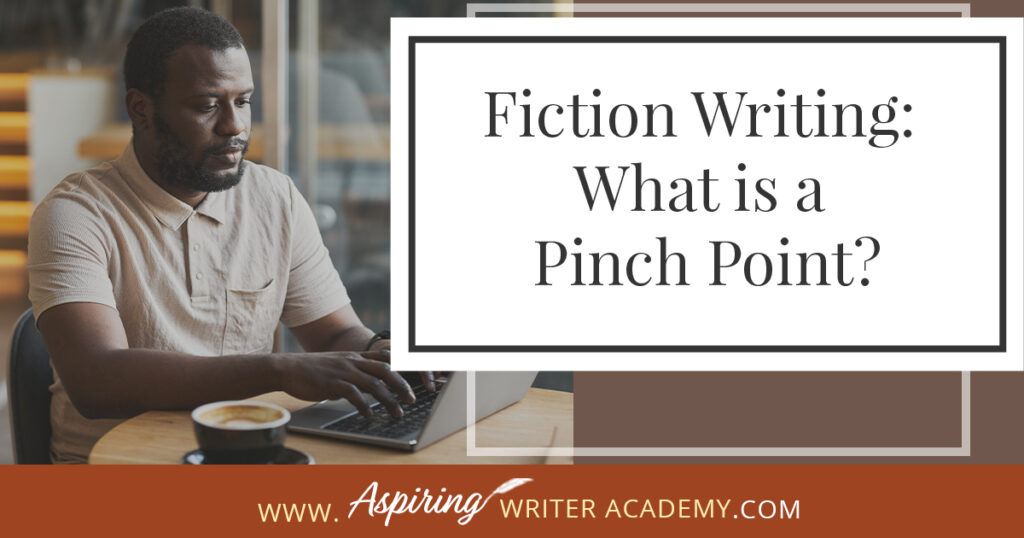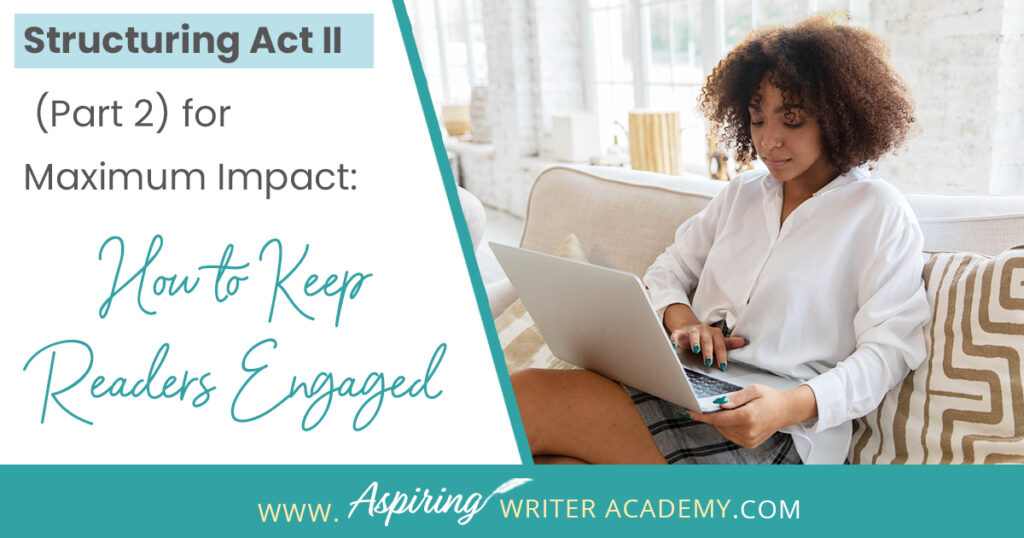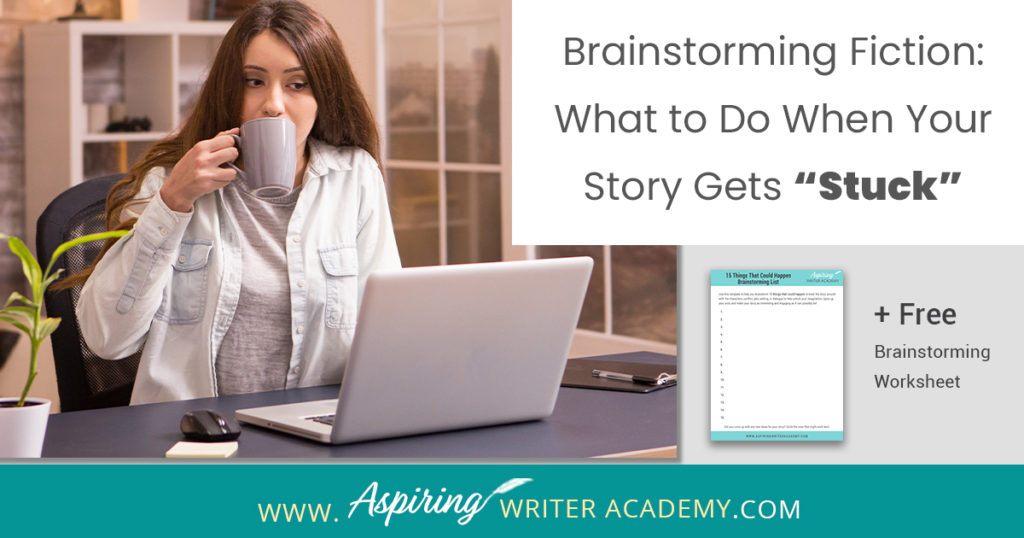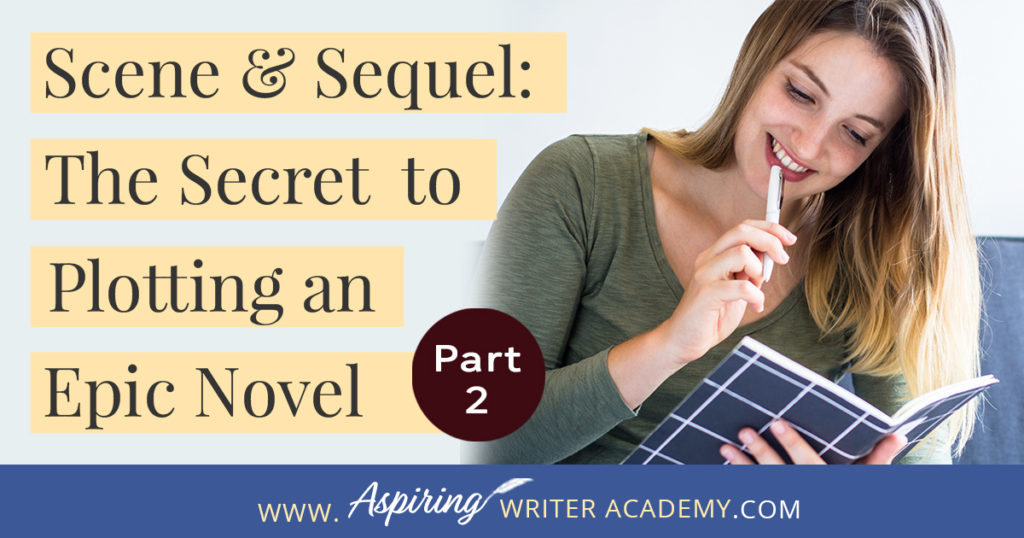Plotting
How to Create a Basic Outline of a Fictional Novel with Characters, Plot, and Setting in One
Looking for a faster, easier way to brainstorm a new story idea? Wondering where to begin—characters, plot, or setting? You can start with any of these elements, but it’s essential to consider how they interconnect, as adjustments may be necessary to craft a cohesive story that works.
How to Outline a Fictional Novel with Characters, Plot, and Setting in One Day offers a set of insightful questions designed to help you create a basic outline for your new fictional story—all in a single session.
Read MoreHow to Create ‘Rising Conflict’ in Your Fiction Novel
‘Rising Conflict’ in a fictional novel adds tension, moves the story forward, and helps create character change. But what exactly is rising conflict? Does every book need conflict? And what is the difference between internal and external conflict?
In How to Create ‘Rising Conflict’ in Your Fiction Novel, we address each of these questions and show you step-by-step how to create rising conflict at the scene and overall story level to write a riveting book your readers will love.
Read MoreHow to Write Your Very First Fiction Novel
Have you ever thought of writing a book? Do you need help coming up with a story idea or creating a working outline? How do you create a cast of characters? Do you need a villain? What is a simple way to plot if you do not have any experience?
What are the basics you need to know to get started?
In our post, How to Write Your Very First Fiction Novel, we go over the first steps you need to take to turn your story idea into a working manuscript that you can be proud of.
How to Plot: One Central Storyline
When others ask what your story is about, do you have trouble coming up with an answer that does not take fifteen minutes to explain? Can you condense the main plot down into a single sentence? Is there a focused theme? Do the subplots relate to the core idea of your novel, or do they go off in a million different directions?
How to Plot: One Central Storyline helps you avoid ‘the eyeroll,’ polite nod, and ‘glazed look’ of agents, editors, and readers so they are excited to read each page.
How to Use ‘The Hero’s Journey’ to Plot Your Novel
If you are writing a novel for the first time or are confused by 3-Act Structures and Plot Points, you may want to use the steps of The Hero’s Journey, first outlined by Joseph Campbell, as a guide. Learn how to take your characters on an epic 12-stage journey of transformation as they overcome obstacles and achieve their goals.
In How to Use ‘The Hero’s Journey’ to Plot Your Novel, we explain each step, allowing you to plot a stronger, emotionally satisfying story from beginning to end.
Read More10 Tips for Using Flashbacks in Your Fictional Novel
A flashback in a fictional novel is a scene that happened in the past to show characterization, motivation, or explain a facet of the present story. But how do you transition in and out of a flashback scene? How many are too many? Are there rules to writing flashbacks?
In 10 Tips for Using Flashbacks in Your Fictional Novel, we discuss how to write clear, concise, plot-driven flashback scenes that will strengthen the story and hook your reader.
Read MoreHow to Use Framing Techniques in Your Fictional Novel
The term ‘Framing’ or using ‘Bookends’ refers to a technique in novel writing where the author creates similar passages at the start and finish of a story, or individual chapter or scene. Similar, but different. It is the tiny changes that give your story that exciting twist, satisfying closure, or added meaning.
In How to Use Framing Technique in Your Fictional Novel, we show you how to use framing on three levels to improve your writing skills, enhance your story, and thrill readers.
Read MoreHow to Write a Novel with the W-Plot Template
Do you struggle with plotting? A simple, easy-to-follow template for writing a fictional story is the W-Plot, perfect for both new writers and non-plotters. The W-Plot structure allows you freedom to create yet keeps your story on track all the way to that grand satisfying end.
In our post, How to Write a Novel with the W-Plot Template, we break down each step to take the frustration out of plotting and give you tips to write a story readers will love.
Read MoreHow to Use Themes in Your Fictional Story
Do you know your story’s theme? Or the difference between a theme and a moral? A theme is the glue that holds your story together and without one, your readers may find themselves scratching their heads wondering what your story is really about.
In our post, How to Use Themes in Your Fictional Story, we give examples of theme, how to weave theme into your story for greater focus, and the right and wrong way to reveal theme at the end of your fictional masterpiece.
Fiction Writing: What is a Pinch Point?
As an aspiring writer, it is hard enough to learn how to develop an interesting character and plot a fictional story that captures a reader’s interest. But what is a pinch point? How many are there in a fictional story and how are they used? Many seasoned writers do not even know!
In Fiction Writing: What is a Pinch Point? we demystify the term and show how inserting significant emotion-packed pinch points into your fictional story can help motivate characters to pursue their story goal.
Read More7 Tips for Writing a Story Synopsis
Ask any writer about the dreaded story ‘synopsis’ and you will most likely hear lots of moans and groans. How do you condense the plot of an entire book into just 2 or 3 pages? What should be included? How should it be formatted? How should characters be introduced?
Join us as we discuss 7 Tips to Write a Story Synopsis to help simplify the process so that you can confidently and successfully write a story synopsis with ease.
Read MoreFiction Writing: What is the ‘Black Moment?’
The ‘Black Moment’ is a major turning point in a fictional story where the main characters lose hope. They have struggled to achieve a specific goal and at this dark, bleak moment something happens, either triggered by the opposition or by their own weaknesses that cause them to believe they’ve failed and ‘all is lost.’
In Fiction Writing: What is the ‘Black Moment?’ we give you tips and illustrative examples to help you create a fabulous Black Moment scene of your own.
Read MoreFiction Writing: What is the ‘Man in the Mirror Moment?’
Do you have a ‘man in the mirror moment’ in your fictional novel? Can you readily identify this pivotal moment in movies or other author’s fiction? Not only is it a turning point in the protagonist’s character arc, but it drives the external storyline forward during the second half of Act II.
In our post, Fiction Writing: What is the ‘Man in the Mirror Moment?’ we explain what this term means and how you can strategically use it to strengthen your entire novel.
Read MoreFiction Writing: What is a Plot Hole?
As its name suggests, a plot hole is a missing piece of your novel that trips up your reader. The story is progressing smoothly and then all the sudden something just doesn’t make sense. This breaks trust with your reader, who now finds the story unbelievable.
How do you know if your story has holes in the plot? In Fiction Writing: What is a Plot Hole? we discuss the various kinds of plot holes so you can eradicate them from your writing and keep your audience enthralled.
Read MoreHow to Write Act III and Finish Your Fictional Story in 5 Steps
What is included in Act III of a Fictional Novel?
In Act III, new information is revealed, prompting the protagonist to make a decision to regather the team or needed resources in preparation for the climax where there will be a face-to-face confrontation with the antagonist or villain, leading to the story resolution.
In our post, How to write Act III and Finish Your Fictional Story in 5 Steps, we simplify the entire process and help you bring your story to a satisfying conclusion.
Structuring Act II (Part 2) for Maximum Impact: How to Keep Readers Engaged
When using the 3-Act-Structure in fiction writing, Act I begins the story, and Act III contains the story ending. But what happens in the middle of the story? Are there specific turning points that should be included?
In Structuring Act II (Part 2) for Maximum Impact: How to Keep Readers Engaged, we cover the key components of the second half of Act II, from the Midpoint Reversal to Plot Point II, to help you create a memorable fictional story to keep readers engaged and turning pages.
Read MoreStructuring Act II (Part 1) for Maximum Impact: How to Keep Readers Engaged
When using the 3-Act-Structure in fiction writing, Act I begins the story, and Act III contains the story ending. But what happens in the middle of the story? Are there specific turning points that should be included?
In Structuring Act II (Part 1) for Maximum Impact: How to Keep Readers Engaged, we cover the key components of the first half of Act II from the Inciting Incident to the Novel Midpoint to help you create a memorable fictional story to keep readers engaged and turning pages.
Read MoreHow to Use Setting to Intensify Your Fictional Scenes
While it is important to focus on the characters and plot of your fictional story, how much attention do you give to the setting? Do you use the weather to depict mood a little too often? Are your scene details randomly inserted without any real purpose or meaning?
In How to Use Setting to Intensify Your Fictional Scenes, we help you create unique settings that work on multiple levels to enhance the scene, reveal your character’s personality, and build intensity into each story conflict.
Read MoreHow to Manipulate Pacing to Increase the Intensity of Your Scenes in a Fictional Novel
Are there sections in your story that are moving too slow? Do you feel like your scenes are not climatic enough? With the right techniques, you can use pacing to slow a story down or to speed a story up, depending on what is required for each scene. What you do not want, is to have the wrong pacing at the wrong time.
Follow along as we show you How to Manipulate Pacing to Increase the Intensity of Your Scenes in a Fictional Novel to help you write a novel that your reader can not put down.
Read MoreHow to Brainstorm a New Novel Using Goal, Motivation, and Conflict
Looking for a new story idea? Before you can sit down and start writing a work of fiction, you will need to brainstorm three key elements:
– What is your character’s Goal? (What does he want?)
– What is this character’s Motivation? (Why does he want it?)
– What is the Conflict your character will face? (What is stopping him from getting it?)
In our post, How to Brainstorm a New Novel Using Goal, Motivation, and Conflict, we show you how to create a working outline to help get your story started!
Read MoreFiction Writing: How to Plot a Story where the Antagonist is an ‘Invisible Foe’
Plotting a fictional novel may seem easy when the antagonist your main character is fighting against is a formidable person or a savage shark or beast. But what if the opposition in your story is a force of nature like an approaching storm, or if the storm is within the mind of your main character, or perhaps in the shape of a horrific disease?
See how we break down the structure for such stories step by step in Fiction Writing: How to Plot a Story where the Antagonist is an ‘Invisible Foe’.
Read MoreFiction Writing: Create a Storyboard to Map Out Your Scenes
What is the first step to writing a scene?
While some writers just wait to see what comes to mind, it is helpful for most writers to have a plan. Figuring out the scene details and objectives on a “Storyboard” beforehand allows you to write your scenes with ease.
If you are unsure how to craft a vibrant, compelling, purpose-filled scene, follow along as we help you with the framework in our post, Fiction Writing: Create a Storyboard to Map Out Your Scenes, with our Free Template.
3 Ways to Avoid Writing ‘Episodic’ Scenes in Fiction
Has anyone ever called your story ‘episodic?’ Were you left wondering what that term even meant? Perhaps you heard the word ‘episodic’ used negatively by an agent or editor at a conference, or by a critique partner, a Beta reader, or…in a rejection letter. In our post, 3 Ways to Avoid Writing ‘Episodic’ Scenes in Fiction, we help you overcome this common writing pitfall so you can strengthen your story and keep readers turning pages.
Read MoreHow to Write Act I: Opening Scenes for Your Fictional Story
Many writers come up with an idea for a great story but get stuck on the opening scenes.
* Where do you start?
* What should be included in chapter one?
* How should you introduce the characters and the story world?
* What exactly is an ‘inciting incident?’
* When do I insert backstory?
* What is Plot Point I?
In our post, How to Write Act I: Opening Scenes for Your Fictional Story, we answer each of these questions to help set your writing on the road to success.
Read MoreBrainstorming Fiction: What to Do When Your Story Gets “Stuck”
When writing fiction, there may be times when your creativity stalls and you don’t know which way the story should go. Or perhaps the obvious next step forward seems boring.
In our post, Brainstorming Fiction: What to Do When Your Story Gets “Stuck” we give you a tool that can be used for characters, conflict, plot, setting, or dialogue to unlock your imagination, spice up your acts, and make your story as interesting and engaging as it can possibly be!
Read MoreHow to Plot Your Fictional Novel (with Free Template Included)
Solid Story Structure. What is it? If you wish to write a satisfying fictional story for your readers, then you must learn the specific elements or ‘Plot Points’ that nearly all Popular Fiction stories share. Using our Free Plot Sketch Template, included in our post, How to Plot Your Fictional Novel, you will be able to identify the various turning points in both movies and books and keep your own stories on track from beginning to end.
Read More5 Questions to Create Believable Villains
What is the difference between an antagonist and a villain? What motivates a villain to do heartless, hurtful, vindictive, terrible things? How can you bring the villain in your fictional story to life for your reader in an identifiable, believable, understandable way?
In our post, 5 Questions to Create Believable Villains, we explore the first questions you should ask when you start to brainstorm this type of character for your story.
Why Your Characters Need Story-Worthy Goals
Have you ever been told by an agent or editor, reviewer, critique partner, or reader that your writing was blah because your main character’s goal was weak, not strong enough, that it wasn’t ‘story-worthy?’
What does ‘story-worthy’ even mean?
In the post below, we will discuss what makes a goal story-worthy so that you can write engaging stories that hold your reader’s attention from beginning to end.
How to Captivate Your Readers with Scene-Ending Hooks
One of the best lines of praise a writer can receive from a reader is, “Your story was so good I couldn’t put it down!” This is the kind of story that is often referred to as a ‘page-turner.’ The reader becomes so involved in the unfolding events of the story that they cannot stop reading because they do not want to miss out on what happens next. Would you like to write a story like that? If so, keep reading as we outline How to Captivate Your Readers with Scene-Ending Hooks.
Read MoreScene & Sequel: The Secret to Plotting an Epic Novel (Part 2)
A good story is about a character who ACTS. His actions and decisions drive the story forward. However, many aspiring writers string together scenes that an editor might call ‘episodic.’ What is ‘episodic?’ This is when your character seems to enter a scene without a clear scene goal or intention of pursuing a scene goal, and a random event occurs causing the character to react. Then another disaster happens to this character in the next scene or the character gets more bad news.
Read More





























